When it comes to luxurious fabrics, two names often come up - Cashmere and Pashmina. But which one is more expensive? Both are famous for their softness, warmth, and unparalleled luxury, but the distinction between them often creates confusion. Is Cashmere the more valuable fabric, or does Pashmina’s reputation make it the pricier option?
To clarify, Cashmere refers to the fine wool sourced from the Ladakhi Changthangi goats, prized for its softness and warmth. On the other hand, Pashmina refers not to the material itself but to the art of processing this high-quality Cashmere into exquisite luxury items. Some of them are shawls, scarves, and wraps. Pashmina is the ultimate expression of craftsmanship, where skilled artisans transform raw Cashmere wool into a timeless work of art.
The purpose of this blog is to compare Cashmere and Pashmina. We will be examining the factors that influence their price - such as the quality of Cashmere, the detailed production processes, and the high market demand. Although makers use Cashmere in various luxury products, its best use is the creation of Kashmiri Pashmina shawls. These shawls are among the most elegant and valuable textiles in the world.
So, let's explore the origins of Cashmere and the intricate production processes that turn it into Pashmina. Also, we will acknowledge the craftsmanship involved, and how the rarity of the material and its market demand influence the price. By the end of this comparison, you will have a clearer understanding of whether all the Cashmere or just Pashmina shawls hold the higher value in the luxury fabric world
Understanding Cashmere
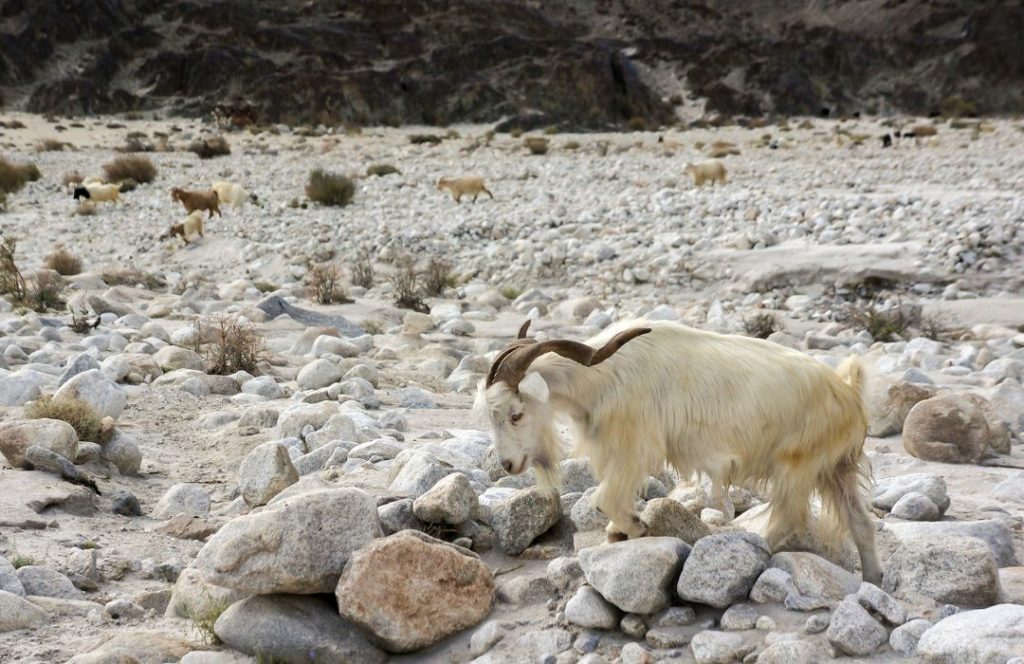
Cashmere is a luxurious and soft wool obtained from the undercoat of Cashmere goats. One can find these goats primarily in regions like China, Mongolia, Iran, and India. However, the finest and softest Cashmere comes from the high-altitude Changthangi goats in the Ladakh region of India. Famous for its exceptional warmth and delicacy, Ladakhi Cashmere is the pinnacle of luxury textiles. This makes it highly sought after in the global market.
The softness of Cashmere is what makes it stand out from other types of wool. The fibers are incredibly fine, measuring only about 10-15 microns in diameter, which gives it its signature softness and warmth. Despite being lightweight, Cashmere provides incredible insulation, making it ideal for cold climates. Its rarity and the limited supply of raw wool contribute to its status as a premium material, and this plays a significant role in the ongoing debate: which is more expensive, Cashmere or Pashmina?
Production Process of cashmere
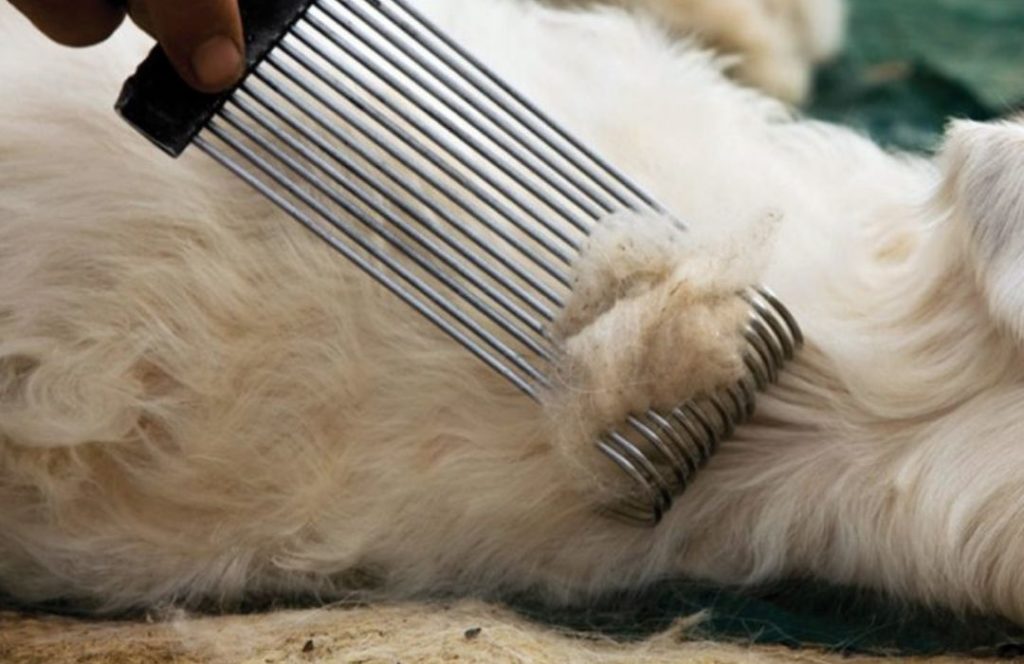
The production of Cashmere wool is labour-intensive and highly meticulous, contributing to its high price. Ethical practices are key, as the wool is collected through combing the goats rather than shearing, which ensures that the animal remains unharmed. This combing process takes place during the spring season when the goats naturally shed their undercoat. Each goat yields only a small amount of Cashmere, roughly 150-200 grams per year, which adds to the wool’s rarity.
After herders collect the raw Cashmere, they sort the fibers to separate the fine undercoat from the coarser outer hair. Afterward, the wool undergoes a process of cleaning and dehairing to remove impurities. The cleaned wool is then hand-spun into yarn, which is later woven into fabric. The traditional methods of spinning and weaving Cashmere are intricate. These require highly skilled artisans, especially in regions like Ladakh, where the practice has come down for many generations. These processes not only ensure the fabric’s quality but also enhance its value.
Quality of Cashmere
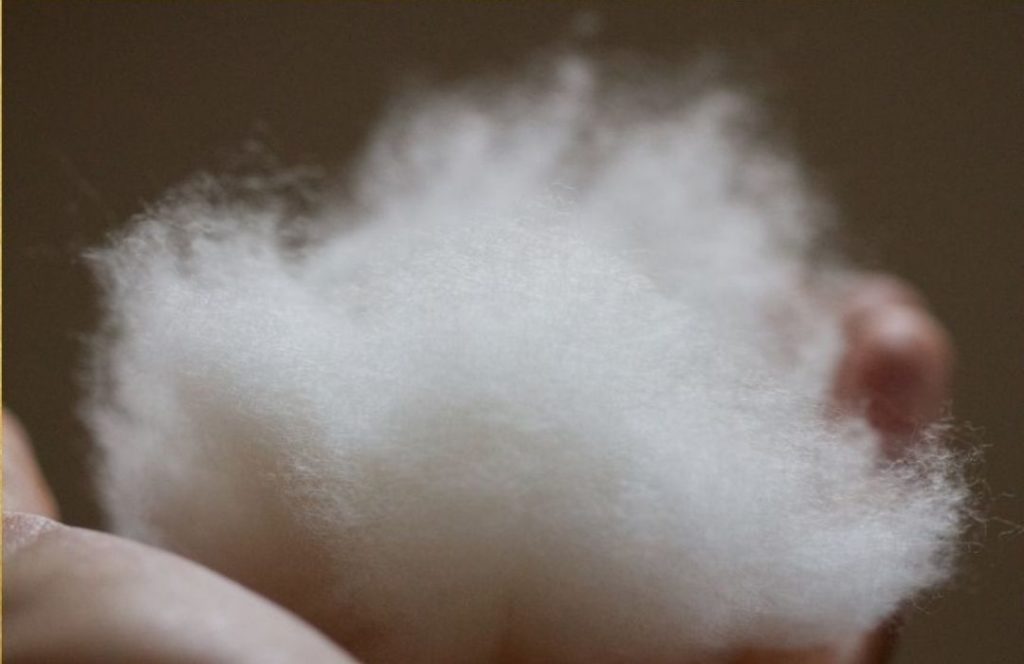
The quality of Cashmere depends on several factors, including fiber length, diameter, softness, and the environment the goats are raised. The best Cashmere has long, thin fibers with a low micron count, which results in a finer, softer fabric. Ladakhi Cashmere is regarded as the highest quality. This is because the extremely cold conditions in Ladakh encourage the Changthangi goats to grow the finest undercoat.
The texture and softness of Cashmere are also influenced by the region’s altitude and climate. Goats in high-altitude areas like Ladakh produce softer wool because of the harsh weather conditions they endure. In comparison, Cashmere from lower altitudes may be slightly coarser, though still luxurious. Ladakhi Cashmere is considered the best because it checks all the boxes for quality: it has the ideal micron count, fiber length, and unparalleled softness.
The rarity of Cashmere, particularly from Ladakh, the complex production process, and the demand for high-quality fibers all contribute to the high cost of this fabric. But do all Cashmere products surpass Pashmina shawls in terms of price and luxury? This question will become clearer as we explore the intricate details of Pashmina in the following sections
Understanding Pashmina
Pashmina is the art of transforming raw Cashmere wool into luxurious, high-quality products, such as shawls and scarves. It starts with Cashmere, which comes from the fine undercoat of the Changthangi goats that roam the harsh, high-altitude regions of Ladakh in India. These goats produce the finest and softest Cashmere wool in the world, thanks to their adaptation to the extreme cold. Pashmina involves a highly-skilled, labor-intensive process that artisans carry out entirely by hand, from combing the goats to creating a finished product. This dedication to craftsmanship makes Pashmina an embodiment of centuries-old artistry.
The production of Pashmina shawls and scarves can take several months, sometimes even years, to complete. Unlike ordinary fabrics, Pashmina is more than just Cashmere wool; it is an intricate, traditional method that elevates the wool to its most luxurious form. This is why people often wonder which is more expensive, Cashmere or Pashmina, as the artistry behind Pashmina significantly adds to its value.
Production Process
The journey of creating Pashmina starts with the careful hand-combing of the Changthangi goats during their natural molting season in spring. This process ensures that only the soft undercoat is collected, while the goats remain unharmed. Each goat produces a limited amount of wool, approximately 80-170 grams per year, which is why Pashmina products are so rare.
After herders collect the wool, it undergoes a meticulous cleaning process to remove impurities. Once cleaned, artisans hand-spin the fibers into delicate yarn using traditional spinning wheels, known as charkhas. Hand-spinning is a skill that has come down through generations and requires precision to maintain the quality and softness of the yarn. Machine-spun yarns simply cannot achieve the same level of delicacy, as they can damage the natural fibers.
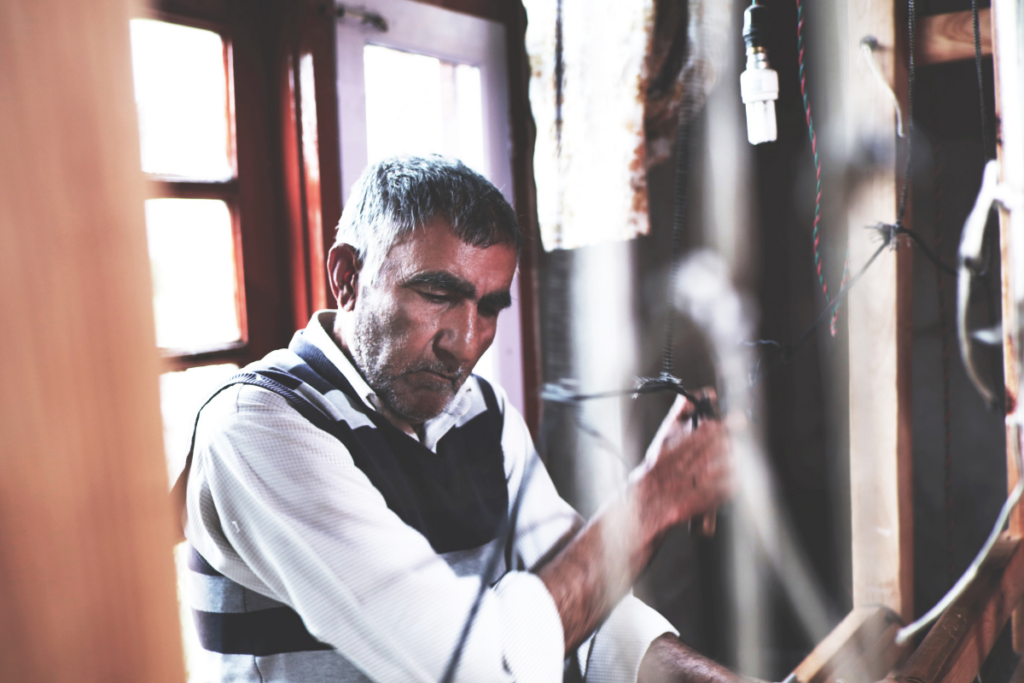
Next comes the weaving process, which artisans again carry out manually on traditional looms. This phase can take several months, depending on the complexity of the design. Skilled artisans hand-weave each thread with care, ensuring the fabric is light, soft, and warm. After weaving, professional dyers dye the shawls using natural or eco-friendly dyes. Later artisans embellish them with intricate embroidery techniques like Sozni or Tilla work. These embellishments add to the uniqueness of each Pashmina product, further enhancing its appeal and price.
Quality of Pashmina
The unparalleled quality of Pashmina shawls lies in their fineness and softness. With a micron count between 10-15, it is much finer than regular sheep wool, which typically ranges between 20-40 microns. This ultra-fine texture makes Pashmina shawls feel incredibly soft against the skin, providing warmth without the bulk. Unlike other types of wool, Pashmina doesn’t cause irritation or itchiness, making it a luxurious choice for those who value comfort.
Pashmina’s quality is also reflected in its lightweight and delicate drape, which no machine-made fabric can replicate. The intricate hand-weaving process produces a shawl that is not only soft and warm but also durable, able to last for generations if properly cared for. The high level of craftsmanship involved in every step - from combing the goats to weaving the fabric - ensures that each Pashmina shawl is a unique masterpiece.
Price Range of Pashmina Shawls
Pashmina shawls are famous for their exclusivity and high price point, especially when compared to machine-made alternatives. Handmade products are significantly more expensive because of the time, effort, and craftsmanship involved in their creation. A genuine Pashmina shawl can cost anywhere from a few hundred to several thousand dollars, depending on factors like the quality of the wool, the complexity of the design, and the embellishments.
Machine-made imitations, on the other hand, are much cheaper but lack the softness, warmth, and authenticity of real Pashmina. They may use blended wool or synthetic materials, which fail to replicate the luxurious feel of true Pashmina. For those who value tradition, artistry, and luxury, the price of an authentic, handmade shawl is a worthwhile investment.
Hence, the labor-intensive process, superior quality, and rarity of the wool contribute to the high cost of Pashmina. While both Cashmere and Pashmina are luxurious, the level of craftsmanship in Pashmina often makes it the more expensive choice, especially when considering handmade items. This comparison between the two will help further answer the question: which is more expensive, Cashmere or Pashmina?
Key Factors That Affect Pricing
When comparing the cost of Cashmere and Pashmina shawls, several factors come into play, including the rarity of the wool, the craftsmanship involved in producing the fabric, and the intricacy of the designs. These elements make it clear why people often ask, which is more expensive, Cashmere or Pashmina? Below is a breakdown of the primary factors that contribute to the higher price of Pashmina, particularly when compared to standard Cashmere.
The rarity of the Wool
Cashmere is an ultra-fine wool type that comes exclusively from the Changthangi goats of Ladakh, India. These goats produce only a limited amount of fine undercoat wool each year, typically around 80-170 grams per goat. The geographic exclusivity and low yield of the Changthangi goats make the wool used for Pashmina incredibly rare. This rarity drives up the price of authentic Pashmina products, making them significantly more expensive than regular Cashmere products. The limited number of goats, combined with the harsh, high-altitude conditions of their habitat, ensures that it remains one of the most sought-after and costly fabrics in the world.
Craftsmanship
One of the most significant factors affecting the price of Pashmina is the craftsmanship. Artisans traditionally handcraft shawls using labour-intensive techniques that have come down through generations of artisans.
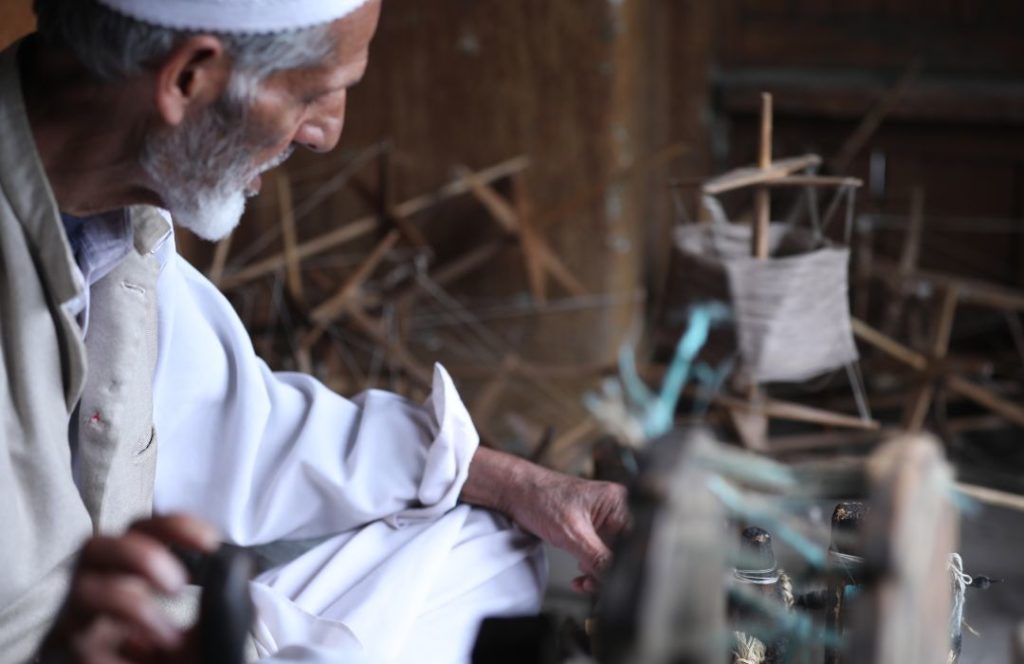
Artisans use traditional spinning wheels (charkhas) to hand-spin the delicate Pashmina fibers into fine yarn. This process requires immense skill and patience, as artisans must spin each thread with care to maintain its softness and fineness. Machine spinning cannot replicate this level of delicacy without damaging the fibers. Once spun, the yarn is hand-woven on traditional looms, a process that can take weeks or even months, depending on the complexity of the design. Artisans carry out the entire process manually, without the aid of modern machinery, which significantly contributes to the higher cost of Pashmina shawls.
By contrast, machine-made Cashmere products, while still luxurious, lack the meticulous handcrafting that goes into Pashmina. This automated process reduces labor costs, making Cashmere products more affordable than their Pashmina counterparts.
Softness and Fineness
The softness and fineness of the fabric play a major role in determining its price. Pashmina is far superior in terms of texture and fineness to its counterparts
Pashmina, with its ultra-fine texture, boasts a micron count between 10-15 microns, making it one of the finest and softest fabrics in the world. The fine fibers create a fabric that feels almost weightless, yet provides exceptional warmth. This delicate and luxurious feel justifies the higher price tag of Pashmina shawls. When worn, Pashmina drapes elegantly, adding an air of sophistication that no other wool type can match
Dyeing and Embellishments
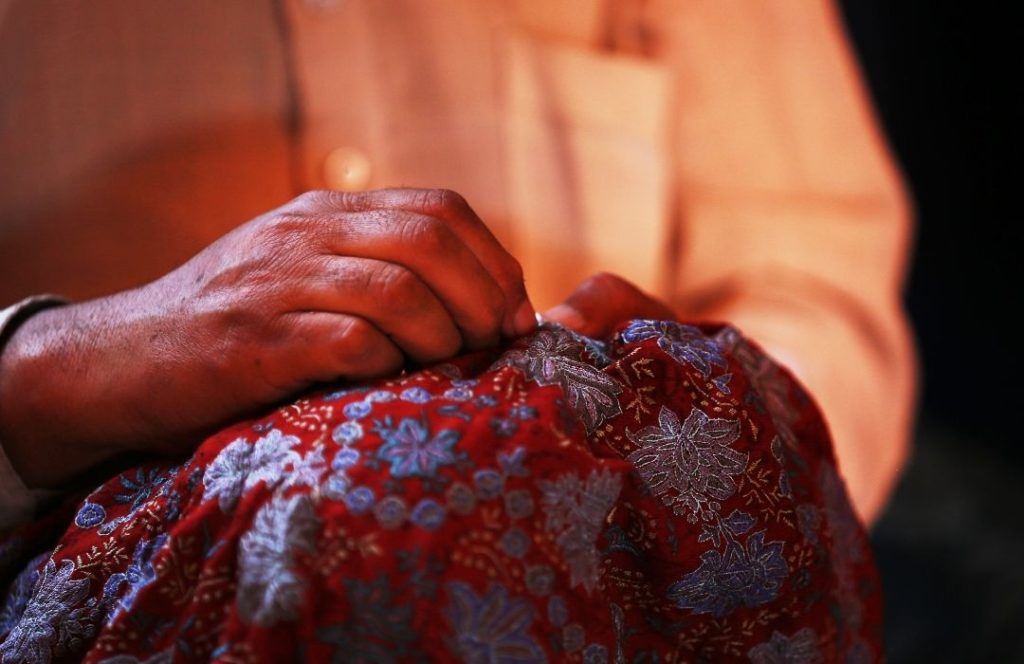
Another key factor that influences the price of Pashmina is the intricate dyeing and embellishment process. Pashmina shawls are often decorated with traditional Kashmiri embroidery techniques like Tilla and Sozni, which require exceptional skill and attention to detail.
Dyeing: Pashmina products are typically dyed using natural or eco-friendly dyes. These enhance the beauty of the fabric without compromising its softness. Dyers carry out the dyeing process by hand so that the colours are evenly distributed across the shawl. In contrast, machine-made Cashmere products are often dyed using synthetic dyes. This can affect the softness of the fabric and make it less expensive.
Embellishments: What truly sets Pashmina apart from standard Cashmere is the intricate hand embroidery that often adorns shawls. Embroidery techniques like Sozni and Tilla can take months to complete, as artisans carefully weave intricate patterns into the fabric using fine threads. This meticulous work adds to the cost of Pashmina shawls, particularly those that feature heavy embroidery or complex designs. In comparison, plain Cashmere shawls without embellishments are significantly more affordable. The manual effort involved in adding these designs makes each Pashmina shawl a one-of-a-kind masterpiece, further driving up its price.
Machine-Made vs. Handmade
The cost difference between machine-made Cashmere and handmade Pashmina products is also notable. Makers often mass-produce machine-made Cashmere scarves and shawls to keep costs down. However, these products lack the softness, durability, and uniqueness of handmade Pashmina. The handcrafting process ensures that every Pashmina shawl is not only soft and fine but also long-lasting, making it a valuable investment.
Market Demand and Global Popularity
When it comes to luxury fabrics, the global market plays a significant role in determining importance of Cashmere or Pashmina. The appeal to consumers differs based on price range, cultural significance, and exclusivity.
Cashmere’s Global Market
Cashmere has gained widespread popularity due to its luxurious feel and relative accessibility compared to Pashmina. It comes from various regions such as China, Mongolia, and Iran, with Ladakhi Cashmere being the finest. The availability of Cashmere across multiple regions means that producers produce it in large quantities. Hence, one can find them in a wide range of price points. This has allowed Cashmere to penetrate the global fashion industry, where it is used in high-end clothing lines, accessories, and home textiles.
One of the main reasons for Cashmere’s global success is its versatility. Cashmere can be machine-spun and woven, which makes mass production easier and more affordable. This has opened the market for Cashmere products to a broader audience, making it a luxury fabric that is accessible to both mid-range and high-end consumers. Cashmere sweaters, scarves, and shawls have become wardrobe staples in colder climates. The fabric’s softness and warmth have ensured its place in the global fashion industry.
Although Pashmina is generally considered the more exclusive fabric, Cashmere’s broad availability has made it a key player in the luxury textile market. Consumers can enjoy the softness and warmth of Cashmere at a variety of price points, which has helped maintain its global popularity.
Pashmina’s Status Symbol
While Cashmere products enjoy widespread accessibility, a Pashmina shawl is the ultimate symbol of luxury and exclusivity. Pashmina shawls, have become synonymous with status and sophistication. This is due to the labor-intensive handcrafting process involved in producing Pashmina and the fact that it is sourced exclusively from the Changthangi goats in the Ladakh region of India.
Pashmina shawls have a long history of being associated with royalty and the elite. In recent years, celebrities and fashion icons have further elevated the status of Pashmina by wearing these shawls on red carpets, at high-profile events, and during important cultural celebrations. The intricate craftsmanship and delicate feel of Pashmina products have made them highly popular. Owning a Pashmina shawl is a sign of refined taste and luxury.
In addition to its association with royalty and celebrities, Pashmina has become a highly desirable item for collectors and those who appreciate fine craftsmanship. The exclusivity of Pashmina, combined with the time-consuming processes of hand-spinning, dyeing, and embroidery, make it a prized possession for anyone who values authentic, handmade luxury products.
Consumer Preferences
Consumer demand for Pashmina varies based on several factors, including cultural significance, fashion trends, and seasonal requirements. Pashmina shawls, in particular, hold great cultural importance in regions like India, Pakistan, and the Middle East. In these regions, they are often worn during festivals, weddings, and religious ceremonies. The elegance and tradition associated with Pashmina make it the fabric of choice for special occasions in these cultures, further driving demand.
In Western markets, Pashmina shawls have become a fashionable accessory, especially during the colder months. Their lightweight, warmth, and luxurious feel make them popular for both formal events and everyday wear. As a result, Pashmina continues to grow in popularity in regions where cultural significance might not be as strong, but where fashion trends dictate a desire for unique and luxurious items.
The question of which is more expensive, Cashmere or Pashmina largely depends on these consumer preferences. While Cashmere products are widely popular and available, Pashmina shawls remain a more exclusive, handcrafted luxury. Cultural importance, craftsmanship, and fashion trends all influence the market demand. Thereby, they ensure that Cashmere holds a strong presence in the luxury fashion world. However, Pashmina’s status as a symbol of ultimate luxury often means that it comes with a higher price tag, particularly for handmade items.
Conclusion
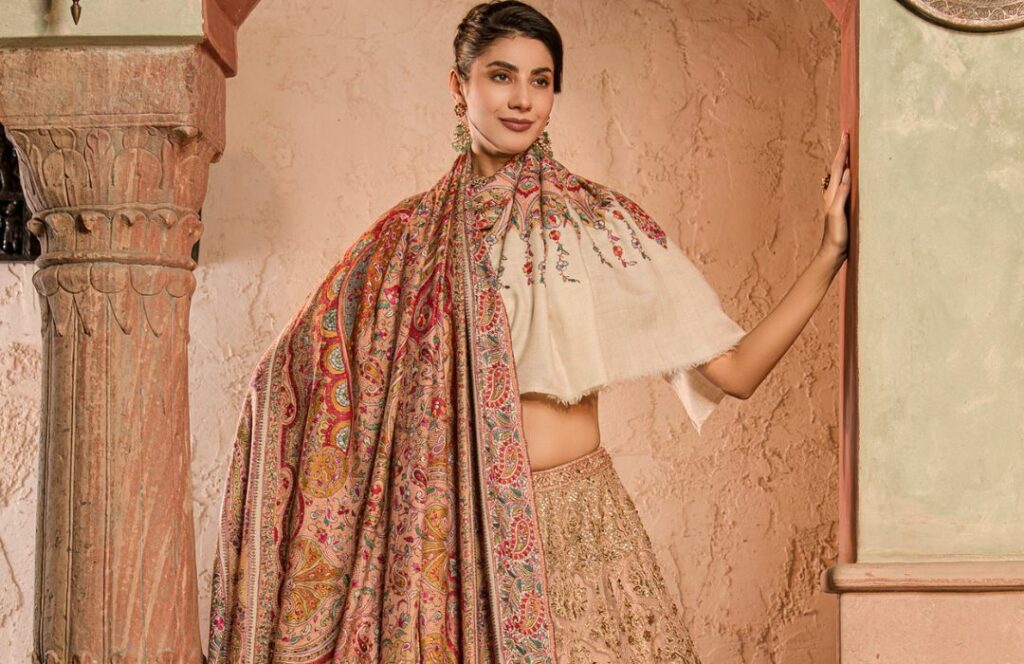
To understand which is more expensive, Cashmere or Pashmina, we must recognize the key difference between the two. Cashmere refers to the fine hair sourced from specific goats, particularly from regions like China, Mongolia, Iran, and Ladakh. On the other hand, Pashmina is the art of transforming this raw Cashmere into luxurious products such as shawls, scarves, and other accessories. The meticulous handcrafting of Pashmina, which involves hand-spinning, dyeing, and embellishing, elevates it beyond the value of standard Cashmere items.
Generic Cashmere products and Pashmina shawls are treasured for their luxurious feel, softness, and warmth. However, Pashmina shawls stand out as the more exclusive and expensive option. This owes to their delicate texture, intricate craftsmanship, and the cultural significance attached to them, especially in regions like Kashmir. The labor-intensive process and rarity of the finest Pashmina further contribute to its higher price compared to generic Cashmere products, making it a true symbol of luxury and heritage.
Ultimately, while Cashmere products remain highly valued, Pashmina holds a special place in the world of luxury fashion due to its unparalleled softness, exclusivity, and deep-rooted cultural significance. Investing in Pashmina is not only about buying a fabric but also acquiring a timeless piece of art.
Also read: The Psychology of Cashmere: How Luxury Fabrics Affect Our Well-being